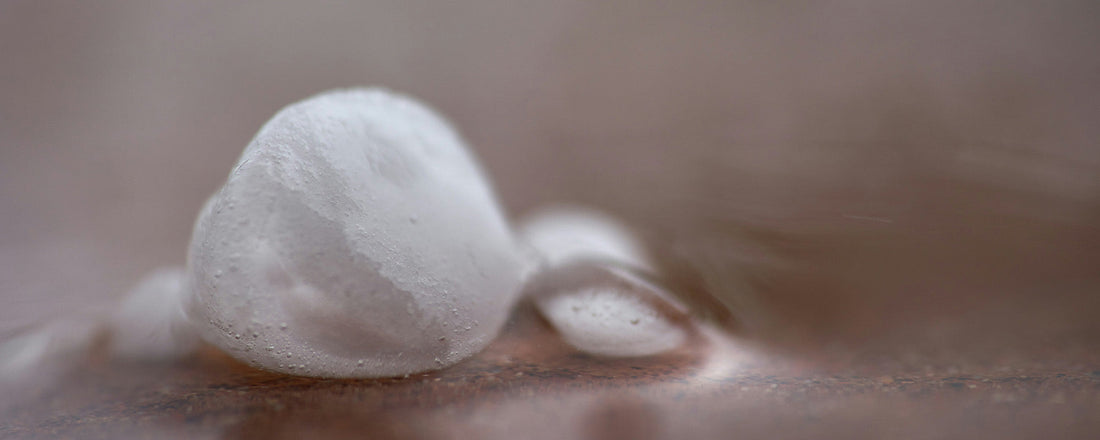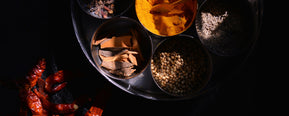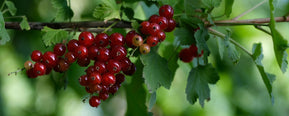What Do Aldehydes Smell Like in Fragrance? Explained Simply
Some perfumes open with something hard to describe.
Not a flower or fruit, but a feeling, something clean and crisp. That effect often comes from aldehydes.
Aldehydes are scent ingredients that don’t smell like much on their own. But when added to a perfume, they change how everything else smells.
Let's find out how Aldehydes help shape the full experience of the perfume from the first spray to the final drydown.
What Are Aldehydes?
Aldehydes are tiny scent molecules. Some are found in nature, like in citrus peels, cinnamon, or flowers. Others are made in a lab, where perfumers can control how they smell and how long they last.
They don’t have one specific scent. Some aldehydes smell sharp and clean, like fresh laundry. Others are soft and smooth, like candle wax or steamed cotton.
What makes them special is what they do in a perfume. They give the scent a lift. They brighten the opening. They make the fragrance feel clear and well-balanced, even if you don’t notice them directly.
How Did Perfumers Discover Aldehydes?
In the early 1900s, perfumers were trying new ideas. They had used natural oils like rose, jasmine, citrus notes for centuries, but these ingredients didn’t always last long on the skin.
One day, a perfumer tried adding a lab-made aldehyde to a floral blend. It wasn’t planned. The dose was higher than usual. But the result was unexpected; the perfume didn’t smell stronger. It smelled brighter. Lighter. Like it had room to breathe.
That one mistake showed something new: aldehydes could change how a perfume opened. They gave the scent a clean, sparkling start.
Since then, perfumers have used aldehydes to add that same lift to make the first spray feel attention-grabbing.
What Do Aldehydes Smell Like?
Aldehydes have a very distinctive scent in perfumery, and their smell depends on the exact type of aldehyde being used. Broadly, they can be described like this:
1. Clean and Soapy
Many aldehydes give off a scent that’s reminiscent of freshly washed laundry or bars of soap. This “clean” impression is one of the main reasons they became iconic in 20th-century perfumes.
2. Bright and Citrusy
Some aldehydes smell sparkling and zesty, almost like lemon or orange peel. They can feel effervescent, adding a “pop” of freshness to a composition.
3. Waxy and Oily
Other aldehydes have a fatty or waxy quality, similar to candle wax or warm butter. Perfumers often balance this with florals or woods so it feels smooth rather than heavy.
4. Sparkling and Diffusive
Perhaps their most important trait is how they “lift” other notes. Aldehydes make florals like rose, jasmine, or ylang-ylang feel more radiant, airy, and expansive.
Aldehydes Table Grouped by Scent:
| Scent Group | Aldehyde Examples | Smell Description | Perfume Effect |
|---|---|---|---|
| 1. Clean & Soapy | Undecanal (C-11), Dodecanal (C-12 Lauric) | Soapy, fatty, laundry-clean, waxy-citrus clean | Creates that iconic “freshly washed” aura, central to classic aldehydic perfumes |
| 2. Bright & Citrusy | Octanal (C-8), Nonanal (C-9), Decanal (C-10) | Orange peel, citrus-floral, zesty-green, crisp brightness | Improve the top notes with brightness and an uplifting sparkle |
| 3. Waxy & Oily | Hexanal (C-6), Dodecanal (C-12, higher dose) | Grassy-fresh but fatty, waxy, candle-like, oily | Provides richness and depth, balances florals and woods |
| 4. Sparkling & Diffusive | Aldehyde C-12 MNA, blends of C-10 to C-12 | Metallic, sharp, airy, champagne-like fizz | Expands florals, gives perfumes their “radiant halo” and luxurious diffusion |
Best Scents to Combine with Aldehydes
Aldehydes are rarely meant to stand alone; their magic comes from the way they interact with other fragrance families. By amplifying, brightening, or smoothing surrounding notes, they transform a perfume into something radiant and expansive. Below are the scent groups that pair best with aldehydes and the unique effects they create.
1. Florals
Roses, jasmine, ylang-ylang, and iris blend seamlessly with aldehydes. When combined, aldehydes act like a spotlight, expanding and diffusing the florals into the air. This pairing is responsible for the glamorous, airy aura that defines many classic perfumes, the luminous “halo” effect.
2. Citrus Notes
Bergamot, lemon, and orange blossom gain extra sparkle when aldehydes are added. Since both citrus and aldehydes share a bright, effervescent character, together they create a radiant freshness, almost like the fizz of champagne.
3. Green Notes
Herbal and leafy notes such as galbanum, violet leaf, and cut grass are sharpened and extended by aldehydes. This combination enhances crispness and gives perfumes a vivid, outdoorsy freshness that feels lively and natural.
4. Powdery and Musky Accords
Powdery notes like iris and violet, or soft musks, can sometimes feel heavy or dense. Aldehydes add shimmer and sparkle, keeping them light and elegant. The result is a refined “clean” aura, often associated with sophistication and softness.
5. Woody and Resinous Bases
Dense materials like sandalwood, vetiver, and incense can feel rich and heavy. Aldehydes cut through this weight, adding air and brightness, which balances the composition. The outcome is both grounded and luminous.
6. Spicy and Aromatic Accents
When paired with aromatic aldehydes such as cinnamic aldehyde or benzaldehyde, warm notes like cinnamon, clove, and even lavender gain extra depth and richness. These combinations produce cozy, sweet, or spicy effects that round out more complex perfumes.
Choosing the Right Aldehydes Perfume
If you want to explore aldehydes, pay attention to the very first seconds of a perfume. That sharp, clean, or fizzy sparkle you smell at the start often comes from aldehydes.
Some perfumes use them strongly, making the opening bright and bubbly. Others add just a touch, giving the scent a smooth and polished feel.
Here’s what to look for:
- Fresh and clean: Seek aldehydes combined with citrus or floral notes.
- Soft and refined: Choose aldehydes paired with powdery accords or musks.
- Green and crisp: Try scents where aldehydes mingle with herbal or leafy notes.
The easiest way to discover your preference is to sample. The Sample Discovery Set from Buchart Colbert offers layered compositions, some with gentle aldehydic touches that shape the opening and guide how the fragrance develops on skin.
The First Impression That Lasts
Aldehydes are small, powerful molecules that shape the opening of a perfume. They don’t belong to one scent family, but they bring clarity, structure, and lift to a fragrance, especially in the first moments after it’s applied.
Whether they smell soapy, citrusy, green, or powdery, aldehydes help define how a scent begins. Some people are drawn to that sharp, clean edge right away. Others prefer it soft and in the background.
FAQs
1. Are aldehydes the reason some perfumes smell “clean” or smell “fresh”?
Often, yes. That soap-like quality in many perfumes, especially in the opening, can come from aldehydes.
2. Is there a difference between aldehydes and musks?
Yes. Aldehydes are often bright and sharp, while musks are soft and warm. They serve different roles in a fragrance composition.
3. Is the powdery scent in perfume from aldehydes?
Yes, sometimes. Certain aldehydes can give a soft, powdery feel, especially when used with florals or musks. But powdery scents more often come from ingredients like iris (orris root), violet, heliotrope, or musk. Aldehydes can enhance that effect, but they’re not usually the main source.


